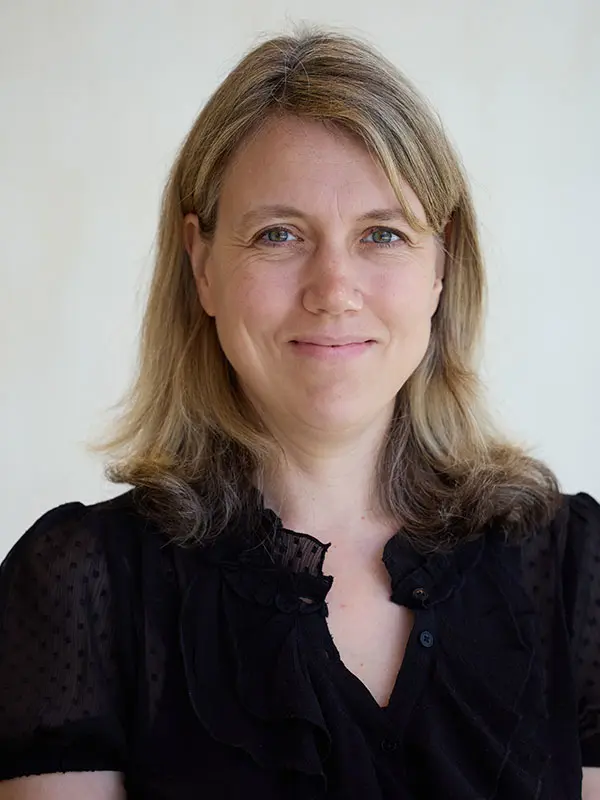One of the major challenges Maaike van Gerwen, MD, PhD, encounters when studying the environmental exposures that contribute to increased thyroid cancer risk is pinpointing the exact moment that such exposures occur. That is why the opportunity to investigate the disease among World Trade Center (WTC) first responders and survivors is invaluable. These individuals were exposed to toxic dust that was found to contain endocrine-disrupting chemicals, some of which are associated with thyroid cancer development and aggressiveness.
“We know the exact moment in time that they were exposed,” says Dr. van Gerwen, Assistant Professor and Director of Research in the Department of Otolaryngology—Head and Neck Surgery at the Icahn School of Medicine at Mount Sinai. “That means we can say with more certainty what the impact of this exposure was on their cancer by comparing their disease characteristics and pathology with those of nonexposed thyroid cancer patients.”
Investigating the Causes of Inflammation and Cancer Among WTC-Exposed First Responders
Dr. van Gerwen is leading two first-of-their-kind in-depth studies that have the potential to unlock new insights on the increased prevalence and aggressiveness of thyroid cancer among WTC-exposed patients. In one study, she is using metabolomics, an "omics" technique, to investigate the accumulation of WTC dust components and their metabolites in the thyroid as a potential driver of inflammation and cancer among WTC-exposed responders. Using 50 WTC-exposed thyroid cancer samples, 50 non-WTC samples, and 50 benign samples, Dr. van Gerwen is looking for differences among the three groups and whether those differences are related to the presence of metabolites. That could provide critical information about a potential association between these metabolites and chronic tissue inflammation and, thus, a possible pathway for the increased occurrence of cancer among the WTC-exposed population.
“We know that inflammation can be a pathway toward cancer,” Dr. van Gerwen says. “We have seen that among WTC prostate cancer patients. Our aim is to see if we can find a similar phenomenon among WTC thyroid cancer patients.”
This study is also unique in that it will include a pilot study that will measure and map out the distribution of metals in fresh frozen tissue samples from five WTC-exposed patients, associate those with inflammatory markers, and then compare findings from that cohort with those from five non-WTC-exposed samples and five benign samples. Although it will be difficult to draw conclusions from these small cohorts, Dr. van Gerwen says the results will be invaluable for adopting these methods for use in studies involving other solid cancers among the WTC-exposed population and to assess environmental pollutants as a risk factor in the growing prevalence of thyroid cancer globally.

The above chart is from a previous study co-authored by Dr. van Gerwen investigating the presence of telomerase reverse transcriptase (TERT) promoter and BRAF V600E mutations between 20 WTC-exposed and 23 matched nonexposed thyroid cancers. While there was no major difference discovered in BRAF V600E mutation, prevalence of TERT promoter mutations was found to be significantly higher among those with WTC-exposed thyroid cancer compared to those nonexposed (p=0.021), indicating that exposure to WTC-impacted thyroid cancer potentially leads to more aggressive cancer.
Investigating Thyroid Cancer Among Survivors Who Lived and Worked Near the WTC
The second study, which launched in July, is the first in-depth investigation of thyroid cancer among the WTC-exposed survivor population, which consists of people who lived, worked, or went to school in the WTC disaster area and includes women exposed while pregnant, adolescents, and other minor children. Using 100 patient profiles from the World Trade Center Environmental Health Center-NYC Health + Hospitals, Dr. van Gerwen will compare the clinical and mutational characteristics of WTC thyroid cancer to those from a cohort of nonexposed controls. She will also explore pathological characteristics and differences between the two cohorts using techniques such as computational modeling approaches and spatial gene expression. Equally notable, Dr. van Gerwen will look at the impacts of early life exposure to the WTC dust cloud on thyroid cancer development and aggressiveness.
“We know from the literature that individuals are more vulnerable to certain exposures at a younger age,” Dr. van Gerwen says. “There are approximately 10 patients enrolled in this survivor program who were under the age of 18 when they were exposed. We hope to include all of them to assess the impact of that early exposure and to enroll a few more over the next three years.”
Dr. van Gerwen believes her findings have the potential to not only inform chemical development and regulation policies that reduce the risk of harmful exposures, but also inform delivery of care among populations that have experienced such exposures, resulting in better outcomes. This, she says, would be a positive result from a tragic event.
“If we can learn something that improves care or impacts policy, that is important,” she says. “That is what we are hearing from the people who are participating in these studies: they are motivated by what happened to give back.”
Featured

Maaike van Gerwen, MD, PhD
Assistant Professor of Otolaryngology-Head and Neck Surgery
